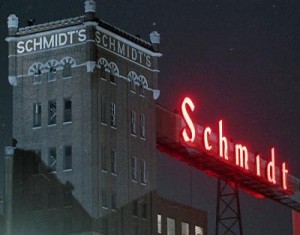(Originally published in the St Paul Pioneer Press, 6-20-14)
I read in a book once that the West Seventh Street neighborhood of St. Paul — the neighborhood in which I grew up — was heavily Irish. This was intriguing to me, since my childhood friends all carried names like Lang, Wittman, Scheuring, Korlath, Meyers and so on. Not an Irish name in the bunch, except for mine.
I apologize on behalf of my Irish brethren: The widely accepted notion that St. Paul is “an Irish town” began as a harmless piece of Irish braggadocio. We never thought anyone would take us seriously. There were twice as many families of German descent than of Irish ancestry on West Seventh, and in the city as a whole. Irish politicians, churchmen and cops helped put a green filter on the city’s image, but there was something else at work, too, something more pernicious than Irish pride.
German culture was suppressed by decades of anti-German prejudice sparked by the first World War, Prohibition and fear of unions — all of which targeted the city’s German population. By World War II, German culture was hard to detect: While the Irish were holding parades, the Germans were keeping a low profile. And the rest of St. Paul made sure they kept it low. In the most-German of the state’s big cities, Germans once had leading positions in St. Paul’s cultural and business life. During World War I, those leaders became liabilities.
As Mary Lethert Wingerd put it in her book about St. Paul, “Claiming The City,” “the assault on all things German called the loyalty of the city itself into question. Pressured to expunge all traces of Germanism — music, language and even food — the people of St. Paul discarded integral elements of the city’s common culture.”
In other words: “Germans? What Germans?”
All of this is by way of drawing attention to a remarkable renaissance along West Seventh. The German heritage of the city is coming back this weekend, along with one of the most visible parts of that heritage, the old Schmidt brewery. A first annual German Fest, an exposition of Germanic music, food and immigrant history, is taking place Saturday and Sunday at the brewery, a mile-and-a-half west of downtown.
Fittingly, the festival will include a ceremony Saturday evening, beginning at 8:30, culminating in the lighting of a recreated SCHMIDT sign, the iconic neon heart of West Seventh that beat from 1951 until the early 1990s when the “brew that grew with the great Northwest” went under, sold to a foreign corporation and caused disgruntled workers to unplug every other letter of the giant sign that loomed over the West End. (Try it yourself, crossing out the “C” and every second letter after).
Saturday, an LED-version of the old neon will be back, along with the cultural pride of the people who built the brewery, which was made to resemble a castle on the Rhine and became the center of life on the Mississippi. The brewery was where my “Irish neighborhood” gathered for Memorial Day parades and events in the Bavarian Rathskeller, where workers earned good paychecks and raised solid families, where the only beer in the fridge was Schmidt and when St. Paul seemed solid and forever. All of that almost went away. But the brewery is coming back with lofts and life, with this weekend’s German Fest as final proof.
“It’s OK to be German again,” says Dave Bredemus, a retired history teacher who grew up next to the brewery and is treasurer of the West Seventh Street Federation, the community group that is co-sponsoring the party. “The word ‘German’ became demonized. But Germans are the leading ethnic group on West Seventh, in St. Paul and Minnesota. We want to celebrate the brewery, this iconic German symbol, to raise money to restore the Rathskeller, and to break some German stereotypes.”
So there will be polka bands and walking tours and German genealogical experts. And there will be help for folks who have been cut off from their own heritage.
“We’re trying to reach the masses, including people who don’t even know they are German, or who have lost it completely,” says Bredemus. “The SCHMIDT sign always meant home to the working people of St. Paul. There was the Capitol and the Cathedral and the 1st National Bank sign, but the Schmidt sign meant home.
“We are coming home.”
All you can say about that, if you ask me, is: Es wird Zeit.
It’s about time.

